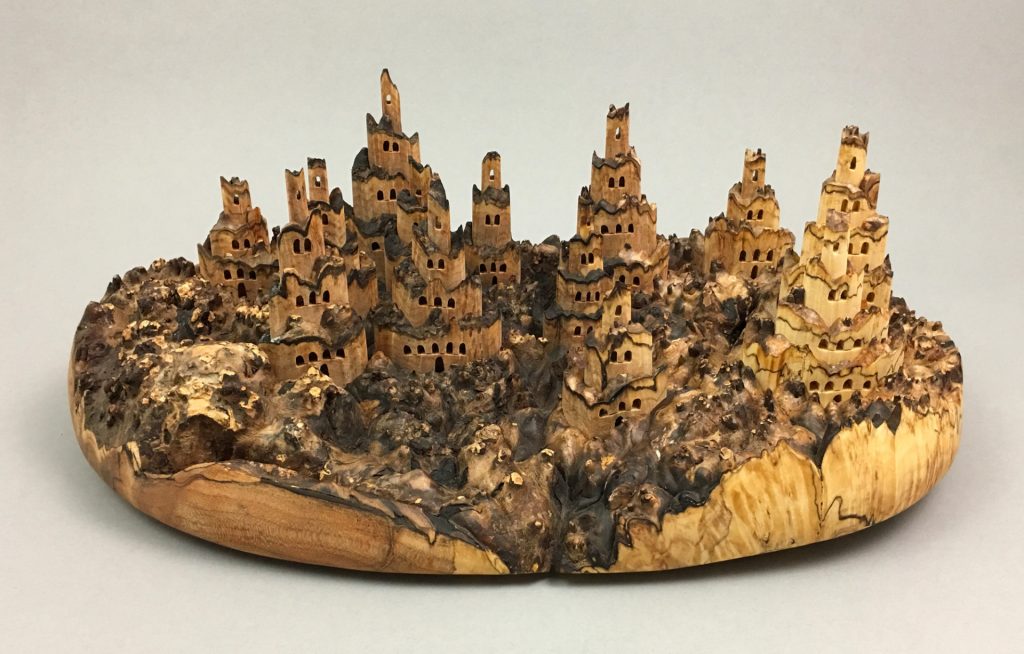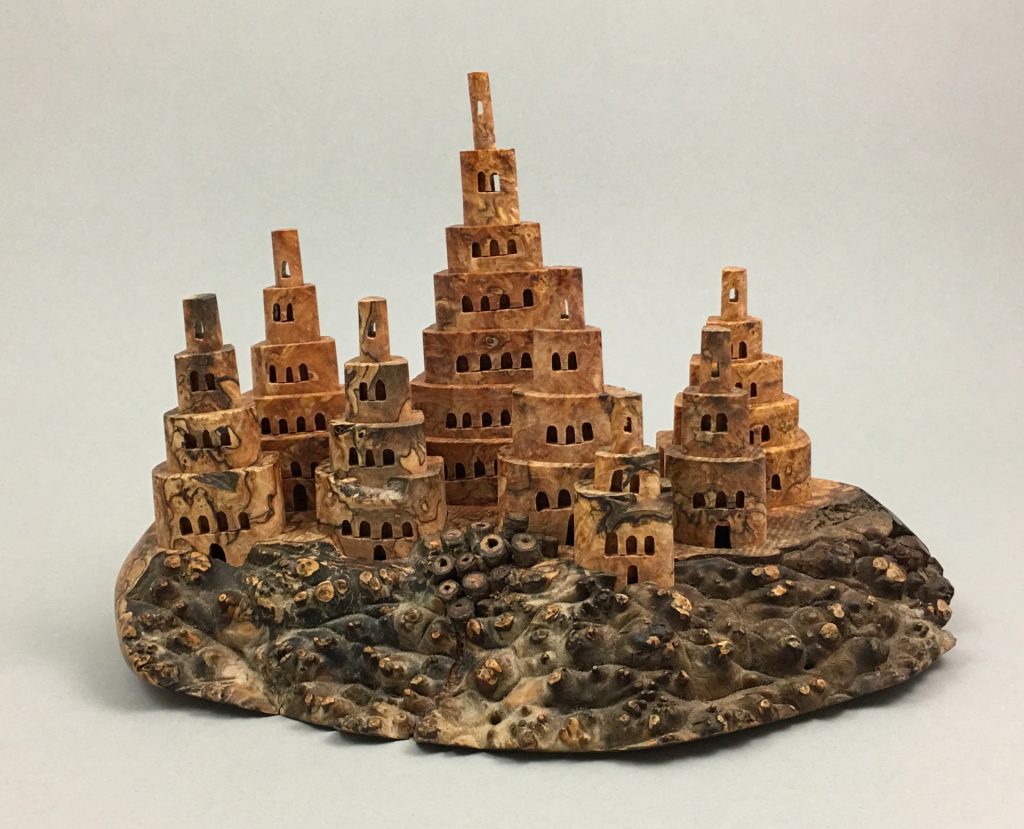Italian woodworker Uli Kirchler shapes kinetic castles out of knobbly tree pieces, which are known as “very hidden castles.” Now based in Oregon, Kirchler uses local wood pieces that have an interesting shape, which ultimately dictates the form and placement of the castles within the wood. The castles, which in starting position resemble an ancient European streetscape, cave into the carved piece of wood after a gentle stroke of the hand.
I admire this piece for its structurally ability to both form a hilly skyline and easily retake the shape of its original wooden formwork. It shares characteristics with general computing practice in how quickly and deceivingly easy a given task is accomplished. Assuming that Kirchler based the positioning of the telescopic castles on the soundest areas of the wood piece, the rhythm of the piece contains an organic quality, giving it a naturalized type of algorithm.


![[OLD FALL 2019] 15-104 • Introduction to Computing for Creative Practice](wp-content/uploads/2020/08/stop-banner.png)